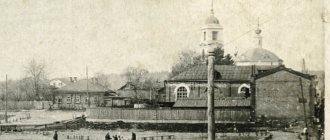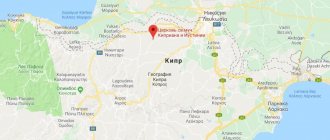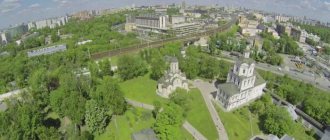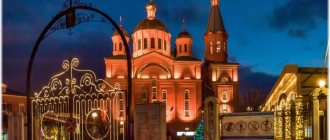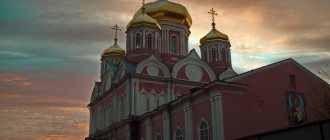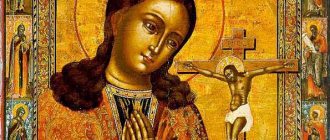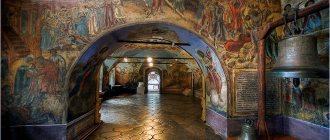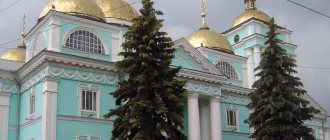Mir
Kazakhstan Map loading in progress...
{"format":"leaflet","minzoom":false,"maxzoom":false,"limit":50,"offset":0,"link":"all","sort":[""], "order":[],"headers":"show","mainlabel":"","intro":"","outro":"","searchlabel":"\u2026 \u0441\u043b\u0435\ u0434\u0443\u044e\u0449\u0438\u0435 \u0440\u0435\u0437\u0443\u043b\u044c\u0442\u0430\u0442\u044b","default":"","import-annotation":false,"width ":"auto","height":"400px","centre":{"text":"","title":"""link":"""lat":47.228608600000001160879037342965602874755859375,"lon": 65.2093196999999946683601592667400836944580078125,"icon":""},"title":"","label":"","icon":"","lines":[],"polygons":[],"circles":[ ],"rectangles":[],"copycoords":false,"static":false,"zoom":5,"defzoom":14,"layers":["OpenStreetMap"],"image layers":[] ,"overlays":[],"resizable":false,"fullscreen":true,"scrollwheelzoom":true,"cluster":true,"clustermaxzoom":7,"clusterzoomonclick":true,"clustermaxradius":80, "clusterspiderfy":true,"geojson":"","clicktarget":"","showtitle":true,"hidenamespace":false,"template":"","userparam":"","activeicon": "","pagelabel":false,"ajaxcoordproperty":"","ajaxquery":"","locations":[{"text":"\u003Cb\u003E\u003Ca href=\"/palomnik/%D0% 9A%D0%B0%D1%84%D0%B5%D0%B4%D1%80%D0%B0%D0%BB%D1%8C%D0%BD%D1%8B%D0%B9_%D1%81% D0%BE%D0%B1%D0%BE%D1%80_%D0%92%D0%B2%D0%B5%D0%B4%D0%B5%D0%BD%D0%B8%D1%8F_%D0% 9F%D1%80%D0%B5%D1%81%D0%B2%D1%8F%D1%82%D0%BE%D0%B9_%D0%91%D0%BE%D0%B3%D0%BE% D1%80%D0%BE%D0%B4%D0%B8%D1%86%D1%8B_(%D0%9A%D0%B0%D1%80%D0%B0%D0%B3%D0%B0%D0 %BD%D0%B4%D0%B0)\» title=\»\u041a\u0430\u0444\u0435\u0434\u0440\u0430\u043b\u044c\u043d\u044b\u0439 \u0441\u043e\u0431\u043e\ u0440 \u0412\u0432\u0435\u0434\u0435\u043d\u0438\u044f \u041f\u0440\u0435\u0441\u0432\u044f\u0442\u043e\u0439 \u0411\u043e\u 0433\u043e\u0440\u043e\u0434\ u0438\u0446\u044b (\u041a\u0430\u0440\u0430\u0433\u0430\u043d\u0434\u0430)\»\u003E\u041a\u0430\u0444\u0435\u0434\u0440\u0430\ u043b\u044c\u043d\ u044b\u0439 \u0441\u043e\u0431\u043e\u0440 \u0412\u0432\u0435\u0434\u0435\u043d\u0438\u044f \u041f\u0440\u0435\u0441\u0432\u 044f\u0442\u043e\u0439 \u0411\ u043e\u0433\u043e\u0440\u043e\u0434\u0438\u0446\u044b (\u041a\u0430\u0440\u0430\u0433\u0430\u043d\u0434\u0430)\u003C/a\u003E\ u003C/b\u003E" ,"title":"\u041a\u0430\u0444\u0435\u0434\u0440\u0430\u043b\u044c\u043d\u044b\u0439 \u0441\u043e\u0431\u043e\u0440 \u0412\u0432\ u0435\u0434\u0435 \u043d\u0438\u044f \u041f\u0440\u0435\u0441\u0432\u044f\u0442\u043e\u0439 \u0411\u043e\u0433\u043e\u0440\u043e\u0434\u0438\ u0446\u044b (\u041a\u0430\ u0440\u0430\u0433\u0430\u043d\u0434\u0430)","link":"","lat":49.77499830000000002883098204620182514190673828125,"lon":73.1583744999999 936453605187125504016876220703125,"icon":"/palomnik/images/c/ce/Green_marker .png"},{"text":"\u003Cb\u003E\u003Ca href=\"/palomnik/%D0%9A%D0%B0%D1%84%D0%B5%D0%B4%D1%80%D0 %B0%D0%BB%D1%8C%D0%BD%D1%8B%D0%B9_%D1%81%D0%BE%D0%B1%D0%BE%D1%80_%D0%92%D0%BE %D0%B7%D0%BD%D0%B5%D1%81%D0%B5%D0%BD%D0%B8%D1%8F_%D0%93%D0%BE%D1%81%D0%BF%D0 %BE%D0%B4%D0%BD%D1%8F_(%D0%90%D0%BB%D0%BC%D0%B0%D1%82%D1%8B)\» title=\»\u041a\u0430 \u0444\u0435\u0434\u0440\u0430\u043b\u044c\u043d\u044b\u0439 \u0441\u043e\u0431\u043e\u0440 \u0412\u043e\u0437\u043d\u0435\ u0441\u0435\u043d\u0438\u044f \u0413\u043e\u0441\u043f\u043e\u0434\u043d\u044f (\u0410\u043b\u043c\u0430\u0442\u044b)\»\u003E\u041a\u0430\u0444\u0435\u043 4\u0440\u0430\u043b \u044c\u043d\u044b\u0439 \u0441\u043e\u0431\u043e\u0440 \u0412\u043e\u0437\u043d\u0435\u0441\u0435\u043d\u0438\u044f \u0413 \u043e\u0441\u043f\u043e\u0434 \u043d\u044f (\u0410\u043b\u043c\u0430\u0442\u044b)\u003C/a\u003E\u003C/b\u003E","title":"\u041a\u0430\u0444\u0435\u0434\u0440\ u0430\u043b\u044c\u043d\u044b\u0439 \u0441\u043e\u0431\u043e\u0440 \u0412\u043e\u0437\u043d\u0435\u0441\u0435\u043d\u0438\u0 44f\u0413\u043e\u0441\u043f\ u043e\u0434\u043d\u044f (\u0410\u043b\u043c\u0430\u0442\u044b)","link":"","lat":43.2587996299999986149487085640430450439453125,"lon":7 6.953198909999997567865648306906223297119140625,"icon":"/palomnik/ images/c/ce/Green_marker.png"},{"text":"\u003Cb\u003E\u003Ca href=\"/palomnik/%D0%9A%D0%B0%D1%84%D0%B5%D0% B4%D1%80%D0%B0%D0%BB%D1%8C%D0%BD%D1%8B%D0%B9_%D1%81%D0%BE%D0%B1%D0%BE%D1%80_% D0%A3%D1%81%D0%BF%D0%B5%D0%BD%D0%B8%D1%8F_%D0%9F%D1%80%D0%B5%D1%81%D0%B2%D1% 8F%D1%82%D0%BE%D0%B9_%D0%91%D0%BE%D0%B3%D0%BE%D1%80%D0%BE%D0%B4%D0%B8%D1%86% D1%8B_(%D0%90%D1%81%D1%82%D0%B0%D0%BD%D0%B0)\» title=\»\u041a\u0430\u0444\u0435\u0434\u0440\u0430\ u043b\u044c\u043d\u044b\u0439 \u0441\u043e\u0431\u043e\u0440 \u0423\u0441\u043f\u0435\u043d\u0438\u044f \u041f\u0440\u0435\u 0441\u0432\u044f\u0442\u043e\ u0439 \u0411\u043e\u0433\u043e\u0440\u043e\u0434\u0438\u0446\u044b (\u0410\u0441\u0442\u0430\u043d\u0430)\»\u003E\u041a\u0430 \u0444\u0435\u0434\ u0440\u0430\u043b\u044c\u043d\u044b\u0439 \u0441\u043e\u0431\u043e\u0440 \u0423\u0441\u043f\u0435\u043d\u0438\u044f \u041f\u 0440\u0435\u0441\u0432\u044f\ u0442\u043e\u0439 \u0411\u043e\u0433\u043e\u0440\u043e\u0434\u0438\u0446\u044b (\u0410\u0441\u0442\u0430\u043d\u0430)\u003C/a \u003E\u003C/b\ u003E","title":"\u041a\u0430\u0444\u0435\u0434\u0440\u0430\u043b\u044c\u043d\u044b\u0439 \u0441\u043e\u0431\u043e\u0440 \u0423\u0 441\u043f\u0435 \u043d\u0438\u044f \u041f\u0440\u0435\u0441\u0432\u044f\u0442\u043e\u0439 \u0411\u043e\u0433\u043e\u0440\u043e\u0434\u0438\ u0446\u044b (\u0410\u0441\ u0442\u0430\u043d\u0430)","link":"","lat":51.149739920000001802691258490085601806640625,"lon":71.480756479999996599872247315943241119 384765625,"icon":"/palomnik/images/c/ce/Green_marker.png"},{ "text":"\u003Cb\u003E\u003Ca href=\"/palomnik/%D0%9F%D0%BE%D0%BA%D1%80%D0%BE%D0%B2%D1%81%D0%BA %D0%B8%D0%B9_%D0%B6%D0%B5%D0%BD%D1%81%D0%BA%D0%B8%D0%B9_%D0%BC%D0%BE%D0%BD%D0 %B0%D1%81%D1%82%D1%8B%D1%80%D1%8C_(%D0%A3%D1%80%D0%B0%D0%BB%D1%8C%D1%81%D0% BA)\» title=\»\u041f\u043e\u043a\u0440\u043e\u0432\u0441\u043a\u0438\u0439 \u0436\u0435\u043d\u0441\u043a\u0438\u0439 \u043c\u043 e\u043d\u0430 \u0441\u0442\u044b\u0440\u044c (\u0423\u0440\u0430\u043b\u044c\u0441\u043a)\»\u003E\u041f\u043e\u043a\u0440\u043e\u0432\u044 1\u043a\u0438\u0439 \u0436\u0435\u043d\u0441\u043a\u0438\u0439 \u043c\u043e\u043d\u0430\u0441\u0442\u044b\u0440\u044c (\u0423\u0440\u0430\u043b\ u044c\u0441\u043a)\u003C /a\u003E\u003C/b\u003E","title":"\u041f\u043e\u043a\u0440\u043e\u0432\u0441\u043a\u0438\u0439 \u0436\u0435\u043d\u0441\u043a\u043 8\ u0439 \u043c\u043e\u043d\u0430\u0441\u0442\u044b\u0440\u044c (\u0423\u0440\u0430\u043b\u044c\u0441\u043a)","link":"","lat":51.252256 0000000027002897695638239383697509765625, "lon":51.38269700000000028694557840935885906219482421875,"icon":"/palomnik/images/f/f8/Yellow_marker.png"},{"text":"\u003Cb\u003E\u003Ca href=\"/palomnik/%D 0%A1% D0%BE%D0%B1%D0%BE%D1%80_%D1%80%D0%B0%D0%B2%D0%BD%D0%BE%D0%B0%D0%BF%D0%BF._% D0%9A%D0%BE%D0%BD%D1%81%D1%82%D0%B0%D0%BD%D1%82%D0%B8%D0%BD%D0%B0_%D0%B8_%D0% 95%D0%BB%D0%B5%D0%BD%D1%8B_(%D0%90%D1%81%D1%82%D0%B0%D0%BD%D0%B0)\» title=\»\ u0421\u043e\u0431\u043e\u0440 \u0440\u0430\u0432\u043d\u043e\u0430\u043f\u043f. \u041a\u043e\u043d\u0441\u0442\u0430\u043d\u0442\u0438\u043d\u0430 \u0438 \u0415\u043b\u0435\u043d\u044b (\u0410\u0441\u0442 \u0430\u043d\u0430)\" \u003E\u0421\u043e\u0431\u043e\u0440 \u0440\u0430\u0432\u043d\u043e\u0430\u043f\u043f. \u041a\u043e\u043d\u0441\u0442\u0430\u043d\u0442\u0438\u043d\u0430 \u0438 \u0415\u043b\u0435\u043d\u044b (\u0410\u0441\u0442 \u0430\u043d\u0430)\u003C /a\u003E\u003C/b\u003E","title":"\u0421\u043e\u0431\u043e\u0440 \u0440\u0430\u0432\u043d\u043e\u0430\u043f\u043f. \u041a\u043e\u043d\u0441\u0442\u0430\u043d\u0442\u0438\u043d\u0430 \u0438 \u0415\u043b\u0435\u043d\u044b (\u0410\u0441\u0442 \u0430\u043d\u0430)", "link":"","lat":51.161069429999997737468220293521881103515625,"lon":71.430322899999993069286574609577655792236328125,"icon":"/palomnik/images/ c/ce/Green_marker.png"},{"text":"\u003Cb\u003E\ u003Ca href=\"/palomnik/%D0%A1%D0%BE%D0%B1%D0%BE%D1%80_%D1%81%D0%B2%D1%82._%D0%9D%D0%B8 %D0%BA%D0%BE%D0%BB%D0%B0%D1%8F_%D0%A7%D1%83%D0%B4%D0%BE%D1%82%D0%B2%D0%BE%D1 %80%D1%86%D0%B0_(%D0%90%D0%BB%D0%BC%D0%B0%D1%82%D1%8B)\» title=\»\u0421\u043e\u0431\u043e \u0440 \u0441\u0432\u0442. \u041d\u0438\u043a\u043e\u043b\u0430\u044f \u0427\u0443\u0434\u043e\u0442\u0432\u043e\u0440\u0446\u0430 (\u0410\u043b\u043c\ u0430\u0442\u044b)\" \u003E\u0421\u043e\u0431\u043e\u0440 \u0441\u0432\u0442. \u041d\u0438\u043a\u043e\u043b\u0430\u044f \u0427\u0443\u0434\u043e\u0442\u0432\u043e\u0440\u0446\u0430 (\u0410\u043b\u043c\ u0430\u0442\u044b)\u003C /a\u003E\u003C/b\u003E","title":"\u0421\u043e\u0431\u043e\u0440 \u0441\u0432\u0442. \u041d\u0438\u043a\u043e\u043b\u0430\u044f \u0427\u0443\u0434\u043e\u0442\u0432\u043e\u0440\u0446\u0430 (\u0410\u043b\u043c\ u0430\u0442\u044b)", "link":"","lat":43.24847720999999722835127613507211208343505859375,"lon":76.928138899999993327583069913089275360107421875,"icon":"/palom nik/images/c/ce/Green_marker.png"}],"imageLayers":[]}
Kazakhstan
(kaz. Kazakhstan [qɑzɑqˈstɑn], officially
the Republic of Kazakhstan
, kaz. Kazakhstan Republics) is a state located in the center of Eurasia, most of which belongs to Asia, and the smaller part to Europe. It is located between the Caspian Sea, the Lower Volga region, the Urals, Siberia, China and Central Asia.
History[edit]
Orthodoxy (in its Russian tradition) appears on the territory of Kazakhstan during the Russian colonization of Siberia and the Far East in the north of modern Kazakhstan, although the first forms of Nestorian Christianity penetrated into the territory of Central Asia and Southern Kazakhstan along the Great Silk Road from the southeast to IV -V centuries and maintained a dominant position in the region until the 7th-8th centuries, when the Arab conquest brought Islam with it between the Amu Darya and Syr Darya rivers. The concentration of Orthodox Christians is higher in the north of the republic and in large cities.
In the 19th century, the Kyrgyz spiritual mission was founded to preach Orthodoxy in the lands of northern Kazakhstan (in Tsarist Russia, the Kazakhs were called Kyrgyz or Kyrgyz-Kaysaks), which existed until 1917, being closed in terms of the general struggle of the communist government against religion.
Since the early 1990s, there has been a revival of Orthodox traditions in Kazakhstan, although in parallel there has been a decline in the total number and share of them in the population due to the mass emigration of Russian speakers in the post-Soviet period. On May 7, 2003, 3 dioceses of the Russian Orthodox Church were organized into the Kazakhstan Metropolitan District. On October 6, 2010, 3 new dioceses were formed on the territory of Kazakhstan. On October 5-6, 2011, three more were allocated from the previous six dioceses.
History of the Kazakh people
The formation of the Kazakh people lasted almost a thousand years, beginning in the Bronze Age.
Origin
The process of ethnogenesis is conventionally divided into three stages:
- The settlement of Central Asia and the emergence of pastoral nomadism are underway. The Andronovo and Turkic tribes and the resettlement of the Huns have a strong influence. It is from the Turkic language that the term “Kazakh” comes, meaning “free”, “independent”, “free” or “wanderer”.
- From the 6th century AD, Islam spread with the arrival of the Arabs; in the 11th century, the grouping of Turkic tribes and the formation of Desht-i-Kipchak (Kipchak Steppe), a historical region of Eurasia, took place.
- The unification of all tribes and clans of the Turks, who acquired a single appearance. The first Kazakh khans Kerey and Zhanibek took about one hundred thousand people to Semirechye in the middle of the 15th century. The people who inhabited Semirechye began to be called Kazakhs.
Culture and traditions
Kazakh culture and traditions are replete with original elements: everything is richly decorated - from costumes and yurts to tools. The national cuisine surprises with its abundance of dishes (mainly meat), and the residents themselves amaze with their extreme hospitality. Kazakhs are also very respectful of their ancestors; they often know their ancestry down to the seventh generation. Family occupies a significant place in the life of Kazakhs; love and respect reign in it.
Shrines[edit]
The relics of saints and miraculous icons in Kazakhstan are located in churches and monasteries of the Russian Orthodox Church.
AKMOLA REGION
ASTANA. Convent in honor of the icon of the Mother of God “Seeking the Lost”:
- “Astana-Pochaev” icon of the Mother of God.
ALMA-ATA REGION
ALMA-ATA. Cathedral of the Ascension:
- "Alma-Ata-Feodorovskaya" icon of the Mother of God.
St. Nicholas Cathedral. Relics:
- whistle Nikolai Alma-Ata (20th century).
SERAFIMO-FEOGNOSTOVSKAYA AKSAI DESERT (Aksai Gorge, near Kaskelen). Relics:
- prmch. Seraphim the Theologian (20th century),
- prmch. Feognost Pivovarov (20th century).
TALDY-KURGAN. St. John the Theologian Church. Relics:
- microwave Vladimir Tsedrinsky (20th century).
ZHARKENT. Elijah Temple. Relics:
- microwave Vasily Kolmykov (Zharkentsky) (20th century).
EAST KAZAKHSTAN REGION
S. URJAR. Elijah Temple. Relics:
- microwave Vissarion Selinin (20th century).
KARAGANDA REGION
KARAGANDA. Vvedensky Cathedral. Relics:
- prisp. Sevastian of Karaganda (20th century).
Orthodox Life
Many, hearing that I am from Kazakhstan, ask in surprise: “Are there really Orthodox Christians there?”
Photo: Mospat.ru
But their surprise grows even greater when I answer that there are more than three million Orthodox Christians in Kazakhstan, that there are many shrines here, and that Christianity appeared in these parts much earlier than in Slavic countries. From church history it is known that the apostles Bartholomew, Matthew and Thomas spread the gospel teaching in Asia, right up to the Central Asian region.
Gravestone from a Christian burial in Southern Kazakhstan
The first documentary information about the presence of Orthodoxy on the territory of modern Kazakhstan belongs to the Arab medieval historian Al-Biruni. According to him, on the lands of Kazakhstan there were Christian communities founded at the beginning of the 3rd century.
Silver dishes with a biblical plot. 7th century South Kazakhstan
In the Middle Ages, Christianity was widespread among many tribes that inhabited Kazakhstan - the Naimans, Kereits and many other Turkic tribes and peoples. Although most of them were Nestorian heretics, there were also communities faithful to Orthodoxy. In the 12th century, the Nestorian Kashgar-Navaket metropolitan district was formed, which included churches located on the territory of Kazakhstan. However, after the Turks adopted Islam, the position of Christianity changed significantly, and by the 12th–13th centuries. There are practically no Christian communities left in Central Asia.
Trinity Church in Ust-Kamenogorsk. Consecrated in 1809
The revival of Orthodoxy on the territory of Kazakhstan is associated with the entry of these lands into the Russian Empire in the 17th century. To protect Kazakhstan from the Dzungars - Mongolian nomads who regularly raided these lands, Russian fortifications were built - Semipalatinsk, Ust-Kamenogorsk, and later - Petropavlovsk, Pavlodar. These cities are still regional centers of modern Kazakhstan. And, of course, Orthodox churches began to be built in them, and Orthodox communities began to appear.
“Golden Church” in Uralsk (Cathedral of Christ the Savior). At its laying on July 31, 1891, St. was present, being the Tsarevich. Tsar Nicholas II
Separately, we need to dwell on Western Kazakhstan. There, on the banks of the Yaik River (modern Ural), the Cossacks settled, Emelyan Pugachev developed his vigorous activity there, and from here he carried out raids. Since most of the Cossacks were schismatics, many shrines are associated with the Old Believers, but there are also Orthodox churches. In the south of Kazakhstan, Russian settlements appeared in the middle of the 19th century. A military fortification is based here - Vernoye (modern Alma-Ata). Around this fortification the villages are built - Sofia, Lyubavinskaya, Nadezhdinskaya (modern cities of Talgar, Kaskelen, Issyk).
Ascension Cathedral in Almaty
In 1867, Verny became the center of the Semirechensk region - the city of Verny. Many churches are being built in and around the city, but the pearl is the Ascension Cathedral, built in 1907. The majestic cathedral, built from Tien Shan spruce, became one of the largest wooden buildings of its time. A special feature of the cathedral was its resistance to earthquakes that often occurred in these places. The earthquake of 1910, which turned the entire one-story Verny into ruins, seemed to bypass the creation of engineer Andrei Zenkov - then the second tallest wooden building in the world, and today it continues to delight all residents and guests of the southern capital of Kazakhstan.
His Holiness Patriarch Alexy II, visiting Kazakhstan, called the Kazakh steppe a huge antimins, spread out under the open sky. In the 20th century, thousands of believers in Christ found rest here.
Prayer service at the site of the murder of Hieromartyr Pimen Vernensky
Already at the beginning of the persecution of the Church, in 1918, Pimen (Belolikov), Bishop of Vernensky and Semirechensky, was martyred in the city of Verny. The place of his burial is unknown, but the place of execution - Baum's grove - attracts pilgrims.
Seraphimo-Feognostovskaya Aksai men's hermitage
In 1921, on Mount Kzyl-Zhar in the Aksai Gorge near the town of Verny, the inhabitants of the mountain monastery - hieromonks Seraphim and Theognost - were killed. The Red Army murderers asked the monks for shelter, and when they fell asleep, they bayoneted them. Throughout the Soviet period, their graves in the mountains were a place of secret pilgrimage. Today, in free Kazakhstan, every year thousands of pilgrims climb to this mountain monastery to pray at the relics of the Aksai miracle workers.
Memorial service at Lisya Balka, the largest mass execution site in Southern Kazakhstan
Among the places of imprisonment and execution of the new martyrs is Southern Kazakhstan. In the city of Chimkent, Kazansky Kirill (Smirnov), Omsky Alexy (Orlov) and many others suffered martyrdom.
Main Directorate of the Karlag NKVD (now the Museum of Victims of Political Repression)
The most tragic page of persecution is Central Kazakhstan. Dispossessed peasant special settlers began to be sent to the city of Karaganda, founded in 1934; in 1931 alone, for the purpose of building the city, 52,000 peasant families were taken here and thrown into the open steppe. People died in the thousands, only a few managed to survive the first winter.
Reconstruction of a standard barracks for prisoners. Museum of Victims of Political Repression
In addition, the largest camp of the Gulag system, the Karaganda Correctional Labor Camp, was founded on the territory of Central Kazakhstan. The camp occupied an area equal to the territory of France and consisted of many branches.
Monument to all Ukrainians who died in Karlag, installed at the Spassky Memorial Cemetery in Karaganda
Over the 28 years of the camp’s existence, more than a million people of different nationalities and religions passed through it, including a huge number of clergy, monks and laymen of the Orthodox Church. There are more than 100 canonized sufferers of Karlag alone. Among them are Metropolitan Evgeniy (Zernov) of Gorky, Bishop Damaskin (Tsedrik) of Starodub, Bishop Uar (Shmarin) of Lipetsk and many others.
Venerable Sebastian of Karaganda
Among the prisoners of Karlag was one of the last Optina elders - Archimandrite Sevastian (Fomin). Father Sebastian was the cell attendant of two Optina elders - Joseph and Nektary. After the dispersal of the Optina brethren, he accepted holy orders. For his faith, he was arrested and exiled to Karlag.
Father Sebastian spent more than 7 years in the camp, and after his release he remained in Karaganda, where his spiritual children still live.
Temple built by the Monk Sebastian in Karaganda (today the Mother of God Nativity Monastery)
In 1944, a small house church was built in a new house in the Bolshaya Mikhailovka area, and Father Sebastian secretly celebrated the Divine Liturgy in it. Only in 1953 did believers obtain official permission to perform church Sacraments and rituals in the Bolshemikhailovsky prayer house, and in 1955 they finally received the long-awaited document on registration of the religious community.
Memorial cell of St. Sebastian in the Mother of God Nativity Monastery in Karaganda
Schema-Archimandrite Sebastian reposed in the Lord on January 19, 1966, on Radonitsa, receiving the schema before his death. The funeral service was performed by the saint’s spiritual son, Metropolitan Pitirim (Nechaev) of Volokolamsk.
Reliquary with the relics of St. Sebastian in the Vvedensky Cathedral of Karaganda
The elder was glorified as a saint in 1997, at the same time his venerable relics were found, which since 1997 have rested in the cathedral he predicted in a splendid shrine, modeled after the shrine of St. Sergius of Radonezh.
It is impossible to describe all the saints who shone in the Kazakhstani land. This is the priest Nikolai of Almaty, and the elder metropolitan Joseph (Chernov) and the nuns-prisoners of ALZHIR (Akmola camp for the wives of traitors to the Motherland).
And yet we believe that through their prayers the Lord will preserve Kazakhstan and His Church in it in the world.
Alexander Adomenas
Petropavlovsk
Of course, Petropavlovsk had the most intense religious life. And out of the number of ancient churches that disappeared, there were as many as four, about which both historians and local historians wrote quite a lot at various times. The most famous religious building in our city was the Ascension Cathedral, on the site of which the drama theater now stands.
It was built in 1865-1870. It was considered the main cathedral of the Peter and Paul district.
Ascension Cathedral in 1929.
In 1923 it was transferred to the hands of the state. Closed in 1930. In 1931, the local history museum moved to the cathedral. From 1935 to 1937 the cathedral was dismantled to its foundations. There is a legend that underneath there was an underground passage, which can be seen in the dungeon of the drama theater. Most likely, the “underground passage” is the foundation of the cathedral, which is still underground.
Kabanye
One of the ancient churches was in the village of Kaban (Kabanya fortress was founded in 1752 as a fortification of the Gorky Line). In 1823, the wooden Church of the Life-Giving Trinity was built in the village using donations from parishioners. You can read the history of the construction of the church here.
In the archives of Sergei Vinnichenko and Sergei Shatilov there is a rather vivid recollection of Father Mikhail Lebedev in 1892 about a visit to the village of Kabanya by Tsarevich Nikolai Alexandrovich (future Tsar Nicholas II).
“To the village of Kabanya. His Highness arrived here on July 19 at 6 pm. Since a freer place was located near the church, three well-cleaned wagons, covered with carpets of Asian workmanship, were placed right in advance of the church gates. The local rector - the dean, with neighboring priests and lower members of the clergy in festive vestments with a cross in their hands, was waiting for the Dear Guest in the vestibule. The church was illuminated as on St. Easter; the space from the church fence gate to the sole was covered with carpets, the best of which covered the place prepared for His Highness at the right choir. Unfortunately, the Sovereign Heir could not be in the church, because, apparently, he was in a great hurry, since one of His Highness’s retinue, during His stay in the wagon, repeatedly came out, ordering the coachmen to quickly lay down the horses. Having accepted bread and salt from the residents of the village of Kabanego, the Grand Duke entered the tent. ....Upon leaving the wagon, the Sovereign Heir demanded the owner of the wagon and when he was not there, then his confidant, to whom he presented the semi-imperial as a souvenir. Here His Highness was met by the teacher and students of the village schools and graciously greeted them. But when the students, under the leadership of the regent deliberately summoned from Kokchetav, sang the national anthem, His Highness, apparently in a hurry, stopped the singing, stood up, bowed to the people to the right and left and, making the sign of the cross, got into the carriage, accompanied by the ringing of bells and enthusiastic shouted “Hurray!” people running after him. All the Cossack schoolchildren rode behind the Sovereign Heir, as their August Ataman, and accompanied Him until He said to them: “Enough children, you are tired; return home and expect a reward from me tomorrow.” And indeed the next day they received from His Highness a silver ruble and a box of chocolates. Returning back, the Governor-General, at a large meeting of the people, greeted the rector of the village of Kabanye, loudly said: “His Highness the Sovereign Tsarevich sends you, the clergy, as well as all other classes, bows and gratitude, since he remained in his passage to everyone and everywhere I am very pleased, which I announce to you in the name of His Highness.”
“The wealthy parishioners sow up to 30 dessiatinas. wheat and almost as much oats; the middle ones - up to 15 dessiatines of wheat and oats, and the poor - up to 5 dessiatines. Rye, millet and hemp freeze and therefore are not sown, and the soil, in general, is not fertile, which is why crop failures often occur here. Dairy farming is developed. There are 4 separators in all villages; they belong to societies. Sheep breeding is developed on an average scale. Excess sheepskins and wool are transported for sale in the city of Kurgan. The parishioners do not have any side activities. The fair happens in the village. Ekaterininsky from September 21 to 26, to which the Kyrgyz and Ukrainian migrants bring large and small cattle and horses. In the village Kabanyevsky - two small shops and 1 manufactory. goods, and in the village. Ekaterininsky - 1 small item. shop. Lake Kabanem is home to crucian carp. Many of the parishioners bring water from Lake Mokhovoy in the summer - in the 7th century. from the village, and in winter everyone uses ice. For medical help, turn to a local doctor or paramedic in the country. Presnovskaya or Kurgan. Communication with Omsk: on horseback to the station. "Makushino" - 80 ver. and from here to Omsk by railway. road,” writes Ioann Golobushin in 1914 in the “Reference Book of the Omsk Diocese.”
Church in Kabanye in 1909. Photo by Nikolay Katanaev.
Presnovka
A beautiful large temple made of pine forest was built in the center of the village of Presnovskaya in 1847.
“Stanitsa Presnovskaya, Petropavlovsk. u., Akmolinsk. region, near Lake Presnoye. There is a post office in the village itself; money and insurance correspondence is received here. The nearest railway station is 55 versts away - Makushino. There is no telegraph station. The distance from the city of Petropavlovsk is 135 versts, from the Diocesan city of Omsk 415 versts. The dean is the priest of the local Mikhailo-Arkhan. churches.
The Church in the name of the Cathedral of St. Michael the Archangel of God, single-altared, built in 1847 from pine forest, on a stone foundation - with the diligence of parishioners, is durable and spacious... The church owns 20 shops and brings income to the church 200 rubles a year, this money is allocated by parishioners for repairs and decoration of the temple. The priest's salary from the treasury is 54 rubles. 4 kopecks, from Cossack military sums 82 rubles. 86 k.; to a deacon from the troops. amounts 72 rub.; 16 rubles to the psalm-reader from the treasury. 80 k., and from the troops. amount 102 rub. 84 k. Church capital 1433 rub. 44 kopecks, clergy - 1007 rubles. The church receives 28 rubles per cent. 66 k. per year; pricht 37 rub. 78 k.; The fraternal circle receives an income of about 600 rubles per year. There are no parish schools or literacy schools in this parish.
Population in the parish: Orthodox men. gender 2410 souls, women. floor 2381 d.; Raskolnikov Pomeranian non-priest sect husband. gender 58 d., female item 66 souls. Orthodox Christians live in peace with schismatics, but do not sympathize with them. According to the staff, there are supposed to be in this parish: a priest, a deacon and a psalm-reader, all of them are in charge. There is a pharmacy in this village, with a doctor and a paramedic at the expense of the Siberian Cossack Army,” - from here.
This is what the church looked like in 1909.
You can look at modern Presnovka here.
Church of St. Mary Magdalene
Station Church of Mary Magdalene or Mariinsky Railway Church, built in 1899-1900 with funds from the railway. Small, cozy, with patterned masonry, large windows - a real decoration of the station square. Since 1923 it ceased to function.
According to the recollections of our readers, it was located at the intersection of the current Satpayev and Medvedev streets in the courtyard of the railway administration. Now in its place is a bomb shelter. It was finally destroyed in the 60s of the last century.
Church in 1930.
Features of Islam in Kazakhstan
Only one branch of Islam is widespread in Kazakhstan. It is characterized by recognition of freedom of opinion in religion, tolerance of dissent, and the absence of fanatical strictness in observing the ritual and legal norms of Sharia. Elements of Islam in the country are rather symbolic and ritual in nature.
Muslim schools
The Kazakhs mainly had two types of religious educational institutions: mekteb (primary) and madrasah (higher). Due to the nomadic lifestyle, mobile schools arose, moving from one area to another. Many mektebs functioned at the mosque. They studied from 3 to 12 years, from the age of 4 or 5. For every boy, attending school was compulsory.
There was not only learning to read the Koran, but also the study of arithmetic, the syntax of the Arabic language, mechanical calligraphy, and the cultivation of good manners. In most mektebs, classes were held only in winter or only in summer. Studying in primary school did not give the right to a religious title; for this it was necessary to study at a madrasah.
At the moment, a whole network of Islamic educational institutions has been created in Kazakhstan: the Higher Islamic Institute for the Training of Imams-Khatybs under the SAMK and the Kazakh-Egyptian Islamic University “Nur”.
Public display of faith
Every year, hundreds of Muslims perform the Hajj to Mecca. Sometimes the opportunity to worship is organized at the state level, but there is no formally official religion in the Republic of Kazakhstan, so this issue is personal for each believer. About 75% of citizens consider themselves believers, but do not regularly perform religious rituals and are not involved in the activities of religious associations.
Special clothing for women
In Islam, from adolescence, women wear a burqa (a long robe for women) and a hijab (a headscarf that does not hide the face) or a niqab (a cloth that hides everything except the eyes).
The Supreme Mufti of Kazakhstan called on parents to negotiate personally (for example, with the school) on the issue of wearing religious clothing.
Medvezhka and Poltavka
Medvezhiy Redoubt was built in 1752 as part of the Gorky Line fortifications. And in the middle of the 19th century, the village already had a parish school, which moved there with the construction of the Bulaevo station. A prayer house was built in Medvezhka in 1905, and then expanded to the size of the church that you see in the 1908 photograph: the Church of the Kazan Icon of the Mother of God.
By 1914, 928 people lived in Medvezhka: a very large village by the standards of that time. There were three mills in the village.
“At the church there is a decent singing choir under the direction of a local psalm-reader. There is no land attached to the church and it will be allocated only when the parish becomes independent. There is a public wooden house for the priest, but not for the psalm-reader; in exchange for an apartment, he receives a housing allowance of 42 rubles. in year. The clergy receives a salary from the community: the priest receives 200 rubles. and the psalm-reader 100 rubles. in year. There is no capital. The fraternal income for a year is no more than 750-800 rubles,” writes priest Ioann Golobushin in the “Reference Book of the Omsk Diocese.”
Near Medvezhka there were churches in Uspenka and Pravdinka (the village of Pravdino was abolished back in the Soviet years). And 10 kilometers to the southwest there was a prayer house in Poltavka: photo from 1909.
Strelnikovka
The church in the village of Strelnikovka, Yesilsky district, was built several years before the 1917 revolution. The village itself was founded in 1908. According to the recollections of village residents, in the 50s local residents were baptized in it, and in 1964 it was dismantled after Strelnikovka was annexed to the Bulak state farm. In Bulak, two single-family houses were built from a church, and a school was built in its place, which is currently also in disrepair.
There is a mention of the Strelnikovskaya Church in the “Presnovsky Pages” of Ivan Shukhov.
Zhambyl district
Novorybinka
Formally, the church in Novorybinka cannot be considered destroyed: the walls are still intact, the architecture is still impressive, but at the moment it is in a deplorable state. We wrote about it several times in November and December. At an auction, the essentially ownerless church was sold for 34.5 thousand tenge to an entrepreneur who was going to restore it. Read about it here.
The church was built in 1864. In Soviet times, it began to be used as a club; films were shown in the premises. And in the 90s the building was left without an owner and began to quickly collapse.
You can follow the fate of this ancient church on Instagram. Yes, this church has accounts on social networks, and there you can follow how the work on its restoration is progressing: @hram_kz.
Ancient religions of Kazakhstan
Before the spread of Islam among the Kazakh people, two religions were very popular: Tengrism and shamanism.
Tengrism
The culture, customs and traditions of the Kazakhs are closely related to Tengrism, a set of ideas about life and the world before the adoption of Islam and the Muslim faith. At one time, the belief was fragmented into occult pagan religions: ancestor cult, animism, polydoxy, totemism and shamanism.
The basis of Tengrism is the deification of Tengri - the sky in the broad sense. Tengri is omnipresent, he is everything and the cause of everything, embodies everything that exists, contains light and goodness. That is why there was no need to look for a specific place for rituals and ceremonies. It is noteworthy that the Turkic peoples called the high mountain or tree Tengri. This tradition has been preserved to this day - a ribbon is tied to the branches of a lonely tree as a sign of honoring the holiness of the place.
According to belief, a person should treat the entire world around him with respect and love. The cult of Tengri is a recognition of the duality of the world, perception and understanding of oneself as a part of nature, unity with it. Trees, earth, rivers, mountains, like humans, have Aruahi - guardian spirits. Kazakhs believe that a person has a soul that needs food, which is precisely what the spirit Aruah gives. It is believed that any deeds reflect on a person’s soul. Evil, violation of promises and oaths, betrayal offend the spirit of ancestors, and thereby Tengri. This tradition of honoring Aruakh obliged the Kazakhs to know their ancestors up to the seventh generation.
Unlike other religions, Tengrism retained the belief in the immortality of the physical body; death is seen as a dream, which will one day be replaced by awakening. Therefore, in the grave, next to the person, they placed the things he needed in his new life.
In our time, the cult of Tengri is intertwined with liberal Islam and the scientific worldview. Now Tengrism is understood as a certain “nationality”, the free religiosity of the Turks, veneration of ancestors, respect for the living and the dead, love of nature, preservation of cultural values, customs, and traditions.
Shamanism
Elements of shamanism can be traced in the lives of many peoples. The Turks gave shamanic abilities the main place; the supreme rulers of nomadic empires turned to the help of shamans (they are called bucks). People came to them, seeking salvation from illnesses and various misfortunes. All this strengthened the “power” of the baksy and contributed to the development of shamanism.
The word “baksy” itself comes from the Chagatai “bakshi”. Shamans were credited with the ability to contact otherworldly forces, prophesy, heal, predict the future, cast a spell, recognize thoughts, see the past, decide human destiny, expel spirits, and cause natural changes. The Kazakh people considered Aruakh, angels and fairies to be light spirits. They tried to protect themselves from creatures such as the devil, the evil spirit, albasty (demons), zheztyrnak (a demon in the guise of a beautiful woman with copper claws and an eagle nose).
The main function of shamans was to prevent phenomena dangerous to humans. The bucks harmonized the life of society, using trance to neutralize the negative energy accumulated in society.
With the spread of Islam, shamans began to be treated in two ways - they were mistaken for people who came into contact with demons and the devil. Since that time, the bucks stopped regulating public life and lived separately from people. But residents continued to turn to them with requests for healing and prediction of diseases.
Gerbil
In the Zhambyl region, near the village of Presnoredut, the village of Peschanka recently existed. A hundred meters from the outskirts of this village, on the shore of the lake, there are the ruins of the Archangel Michael Monastery, the history of which was told in some detail by one of our authors, Sergei Vinnichenko. Be sure to read it - it's here.
This is what the first church-chapel on its territory looked like.
And this is a temple in the village of Presnoredut.
These buildings are completely destroyed. But you can see what remains of the convent in one of the videos from last year.
These are not all the churches and temples that have disappeared in the north of Kazakhstan. Over the past 270 years, dozens of churches have been built, destroyed, burned in fires and rebuilt here. Most large villages had their own churches or at least chapels and prayer houses, but it is now almost impossible to list each of them here: there is no one to remember about others.
Catholicism
Main article: Catholicism in Kazakhstan
One archdiocese-metropolis of the Blessed Virgin Mary has been established on the territory of the country, with its center in Astana. Two dioceses are subordinate to it - Karaganda and the Diocese of the Holy Trinity, with its center in Almaty, as well as the Apostolic Administration of Atyrau[3]. The total number of Catholics in Kazakhstan is about 180 thousand; as of 2004, 50 parishes were registered, with 72 priests working in them[4].